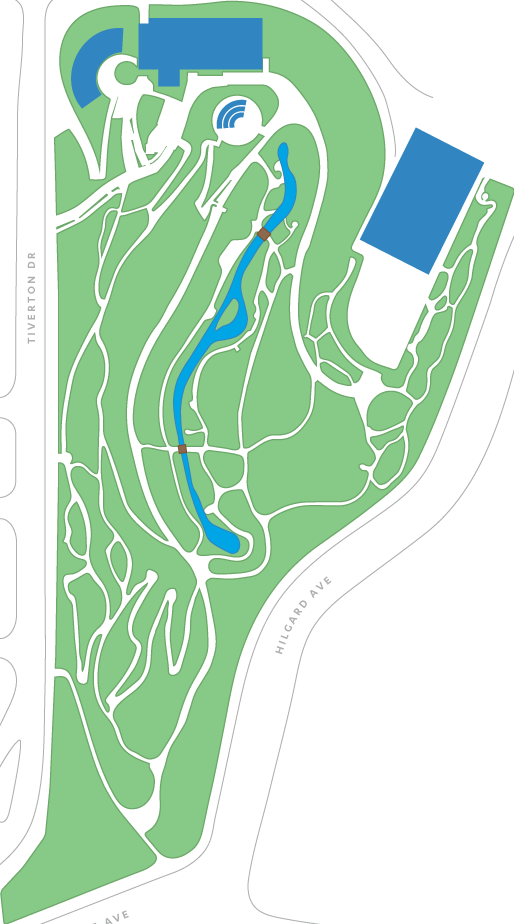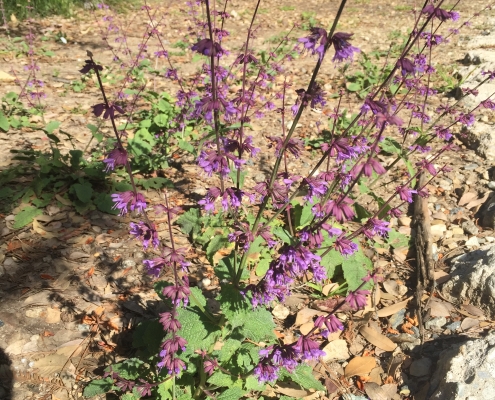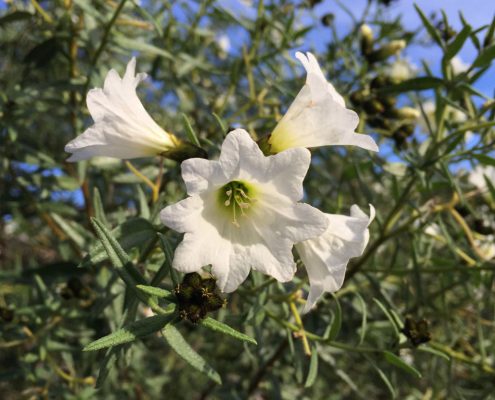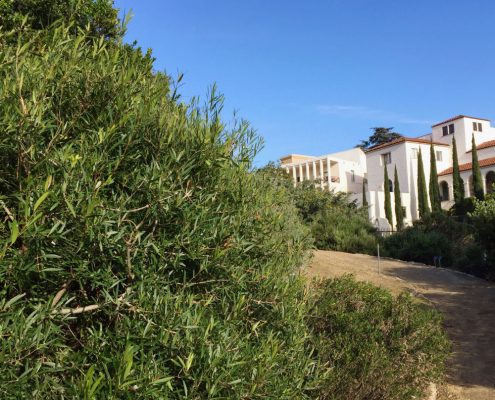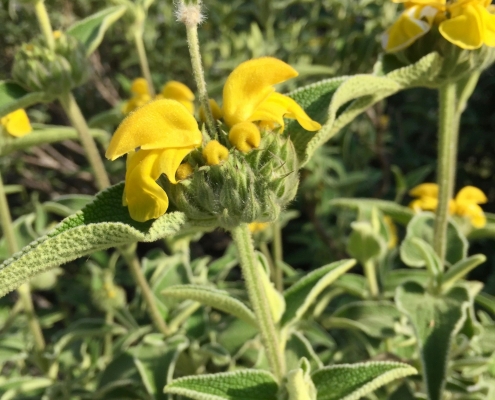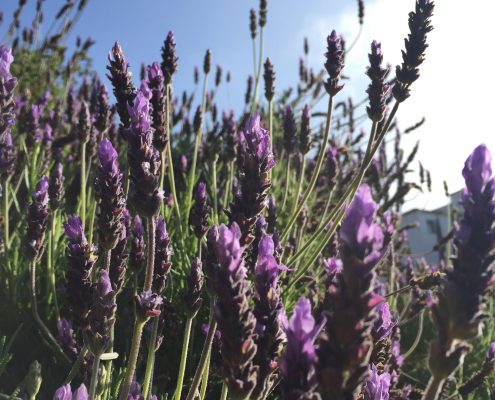![]()
Mediterranean Ecosystem
Most of California experiences a Mediterranean climate. This climate is characterized by cool, wet winters and warm, dry summers. Only four other regions on Earth share this climate, allowing plants from these areas to grow well in southern California.
Mediterranean-type climate regions are important areas for conservation and biodiversity. While they account for only 2.25% of Earth’s land surface, they are home to 16% of its plant species. This is what makes California a biodiversity hotspot. Here in our Garden, you’ll find:
- Phlomis from the Mediterranean Basin
- Cordia from central Chile
- Aloe from the Cape of South Africa
- Eucalyptus from southwestern Australia
ECOSISTEMAS MEDITERRÁNEOS
La costa de California experimenta un clima mediterráneo, el cual está caracterizado por inviernos frescos y húmedos y veranos secos y calientes. Existen cuatro regiones en el mundo que también comparten este clima, y las plantas que prosperan en estas áreas crecen bien aquí en Los Ángeles. En nuestro Jardín puedes encontrar Phlomis de la cuenca del Mediterráneo, Cordia del centro de Chile, Aloe del Cabo de Sudáfrica y Eucalyptus del suroeste Australia. A pesar de que las regiones con clima Mediterráneo representan tan solo el 2% de la superficie de la Tierra, son hogar para más del 15% de las especies de plantas, lo cual las hace importantes áreas para la conservación.
Explore Further
The word climate just means the average weather pattern over a long time. Climate can feel like a very charged word as we face the environmental destruction caused by human-induced changes in global climate patterns. The term Mediterranean refers to the Mediterranean Basin of Europe, as well as a climate regime experienced there. The five regions in the world which experience a Mediterranean climate are all located about 30°-40° North or South latitude of the Equator. Additionally, they all exist along the southwest coast of a continent where the ocean and wind currents create this unique long-term pattern of weather. These regions also have similarities in their vegetation as well climate. The vegetation of these areas are dominated by evergreen shrublands, with plants leathery leaves.
Our Mediterranean Ecosystem collection is currently being revitalized to include plants with wild provenance data, which is valuable for research purposes in contrast to plants sourced from nurseries. We are grateful to the Jerusalem Botanical Gardens for sharing wild-collected seeds of plants from their region, including the Salvia judaica with purple flowers you can see in the photos below.
Check out this video to learn more about the Mediterranean Climate.
